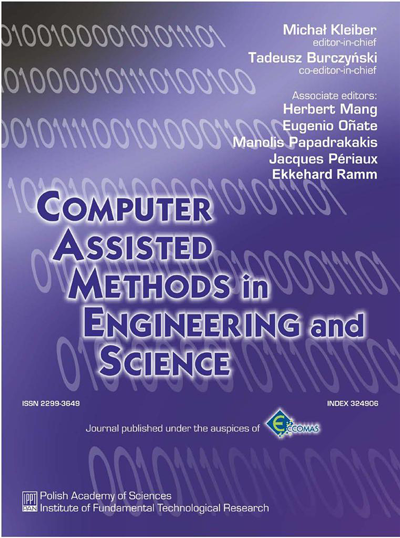Validation of an experimental technique with the physically based global method
Abstract
Validation of an experimental approach requires that both model and data errors are proved to be within acceptable ranges. In case of destructive testing none of the classic, statistically based methods can be applied for that task due to the lack of independent data series required for building data statistics. The aim of the paper is to present a non-statistical methodology for performing such validation, developed within the framework of physically based approximation (PBA). It has been developed to validate a neutron diffraction based experimental-numerical approach applied for studying 3D rail residual stress. It is for the PBA technique's capability to provide high quality physically reasonable data fits for one data set only, treated here as higher order reference fields that made it possible to develop this methodology and perform error analysis/validation. In many ways this approach is analogical to Zienkiewicz-Zhu type of error estimators, and its performance will be demonstrated for a defective RE136 rail sample that was installed in a US DOT test track.
Keywords
physically based approximation, experimental data error estimation, validation of experimen- tal technique, residual stress in railroad rails, neutronography,References
[1] J. Magiera, J. Orkisz, W. Karmowski. Reconstruction of residual stresses in railroad rails from measurements made on vertical and oblique slices. Wear, 191: 78–89, 1996.[2] C.G. Schilling, G.T. Blake. Measurement of triaxial residual stresses in railroad rails. Association of American Railroads, Chicago Technical Center, Report No. R-477, 1981.
[3] J.J. Groom. Determination of Residual Stresses in Rails. Final Report for US DOT No. DOT/FRA/ORD–83/05, 1983.
[4] Z. Świderski, A.Wójtowicz. Plans and progress of controlled experiments on rail residual stress using the EMS-60 machine. In O. Orringer et al. [Eds.], Residual Stresses in Rails: Effects on Rail Integrity and Railroad Economics, Vol. I, 57–66, Kluwer Acad. Publ., Dordrecht, Boston, London, 1992.
[5] H. Meier. Eigenspannungen in Eisenbahnschienen. Zeitschrift Vereines Deutscher Ingenieure, 81(12): 362–363, 1937.
[6] J. Magiera. A hybrid experimental-numerical analysis of residual stress in rails. PhD dissertation, Cracow University of Technology, Cracow, 2001.
[7] J. Magiera. Enhanced 3D Analysis Of Residual Stress In Rails By Physically Based Fit To Neutron Diffraction Data. Wear, 253, 228–240, 2002.
[8] J. Magiera. Enhanced setups for T/O-S experimental scheme. Interim Report, Volpe National Transportation Systems Center, US DOT, Cambridge, MA, 2002.
[9] W. Karmowski, J. Orkisz. A physically based method of enhancement of experimental data – concepts, formulation and application to identification of residual stresses. In: M. Tanaka, G.S. Dulikravich [Eds.], Inverse Problems in Engineering Mechanics. 61–70, Springer Verlag, Tokyo, 1993.
[10] J. Magiera. A meshless FDM applied to a posteriori error analysis of experimental data by physically based global method approximation. In: K.J. Bathe [Ed.], Computational Fluid and Solid Mechanics, Elsevier, 2060–2063, 2003.
[11] J. Magiera. Physically based MWLS-type approximations in smart smoothing of experimental data. In: S.M. Sivakumar et al. [Eds.], Advances in Computational and Experimental Engineering and Sciences, Tech Science Press, Chennai, 2005.
[12] J. Magiera. Non-statistical physically reasonable technique for a posteriori estimation of experimental data error. CAMES, 13: 593–611, 2006.
[13] W. Karmowski, J. Orkisz. Fitting of curves and surfaces basing on interaction of physical relations and experimental data. Appl. Math. Mod., 7(65): 15–21, 1983.
[14] J. Deputat, J. Szelążek, M. Adamski. Experiences in ultrasonic measurements of stresses in rails. In J.J. Kalker et al. [Eds.], Rail Quality and Maintenance for Modern Railway Operation, 109–118, Kluwer Acad. Publ., Dordrecht, Boston, London, 1993.




